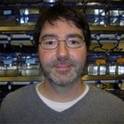
We combined reverse and chemical genetics to identify targets and compounds modulating blood vessel development. Through transcript profiling in mice, we identified 150 potentially druggable microvessel-enriched gene products. Orthologs of 50 of these were knocked down in a reverse genetic screen in zebrafish, demonstrating that 16 were necessary for developmental angiogenesis. In parallel, 1280 pharmacologically active compounds were screened in a human cell-based assay, identifying 28 compounds selectively inhibiting endothelial sprouting. Several links were revealed between the results of the reverse and chemical genetic screens, including the serine/threonine (S/ T) phosphatases ppp1ca, ppp1cc, and ppp4c and an inhibitor of this gene family; Endothall. Our results suggest that the combination of reverse and chemical genetic screens, in vertebrates, is an efficient strategy for the identification of drug targets and compounds that modulate complex biological systems, such as angiogenesis.
Available at: http://works.bepress.com/jeffrey_essner/21/

This is a manuscript of an article published as Kalén, Mattias, Elisabet Wallgard, Noomi Asker, Aidas Nasevicius, Elisabet Athley, Erik Billgren, Jon D. Larson et al. "Combination of reverse and chemical genetic screens reveals angiogenesis inhibitors and targets." Chemistry & biology 16, no. 4 (2009): 432-441. doi: 10.1016/j.chembiol.2009.02.010. Posted with permission.